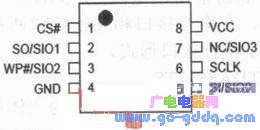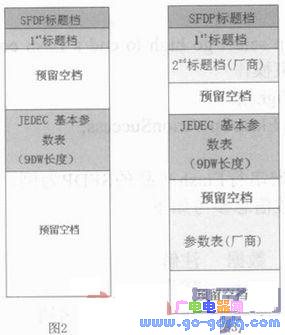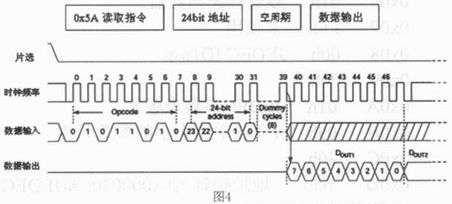The JEDEC standard (JESD216) Serial Flash Discoverable Parameter (SFDP) [1] is a standardized table that describes the functions of serial flash memory and can be accessed through the serial flash device. This article delves into the structure, functionality, and application of SFDP in system design. It explains how this parameter table helps developers understand the capabilities of different serial flash devices, enabling more efficient integration and compatibility testing within embedded systems.

Serial Flash is a type of SPI interface NOR Flash, which is a non-volatile storage solution commonly used to store boot programs in embedded systems. Its advantages include compact size, minimal pin count, simple interface, and easy expandability. The typical package has 8 pins: chip select, data input, write protection, ground, data output, clock, pause, and power supply. Unlike parallel flash, which uses multiple data and address lines, serial flash employs a single data line for both input and output, significantly reducing the number of required connections. Some advanced models support four-in and four-out modes, further increasing data transfer rates. With frequencies exceeding 104MHz, serial flash now offers performance comparable to or even better than traditional parallel flash.
As a result, serial flash is increasingly being adopted in various applications such as computers, consumer electronics, wireless communication, automotive systems, and industrial control. By using serial flash instead of parallel flash, designers can reduce PCB size, simplify wiring, and improve electromagnetic compatibility (EMC). Additionally, main chips supporting only serial flash can save space and reduce pin count, making it an attractive choice for modern system designs.

With the growing use of serial flash, the need for a unified standard became apparent. Different manufacturers often implement similar features with varying instructions and parameters. For instance, sector erase operations may have different commands across devices, making it challenging for developers to ensure compatibility during system design. To address this, JEDEC introduced the JESD216 SFDP standard. This specification allows for a consistent and programmable parameter table embedded within serial flash, providing essential information about the device's capabilities without consuming user memory space.
The SFDP standard includes mandatory elements such as the SFDP header, the first parameter header, and the JEDEC Flash basic parameter table. The header contains a signature ("SFDPS") to confirm the presence of the standard. The basic parameter table defines key features like read commands, sector sizes, and chip capacity. Manufacturers can also add additional parameter headers to describe custom features, such as voltage requirements or special instructions. These optional sections are not required by the standard but provide valuable insights for developers.

To read SFDP data, the system software must follow a specific sequence: activate the chip select signal, send the 0x5A instruction to initiate SFDP reading, transmit a 3-byte address, insert a dummy cycle, and then read the data from the output pin. This process ensures accurate retrieval of the parameter table, allowing the system to identify the flash device and its features. The timing diagram illustrates this procedure clearly, showing how each step aligns with the serial communication protocol.
By leveraging SFDP, developers can quickly access critical information about the serial flash device, improving system design efficiency and reducing the need for manual configuration. This standard plays a vital role in simplifying the integration of serial flash into modern embedded systems, ensuring compatibility and reliability across a wide range of applications.
Cloud Storage PCB,Smart Home PCB,Pcba Circuit Board,Pcb Customized
Dongguan Jinglin Communication Technology Co., Ltd. , https://www.jlpcba.com